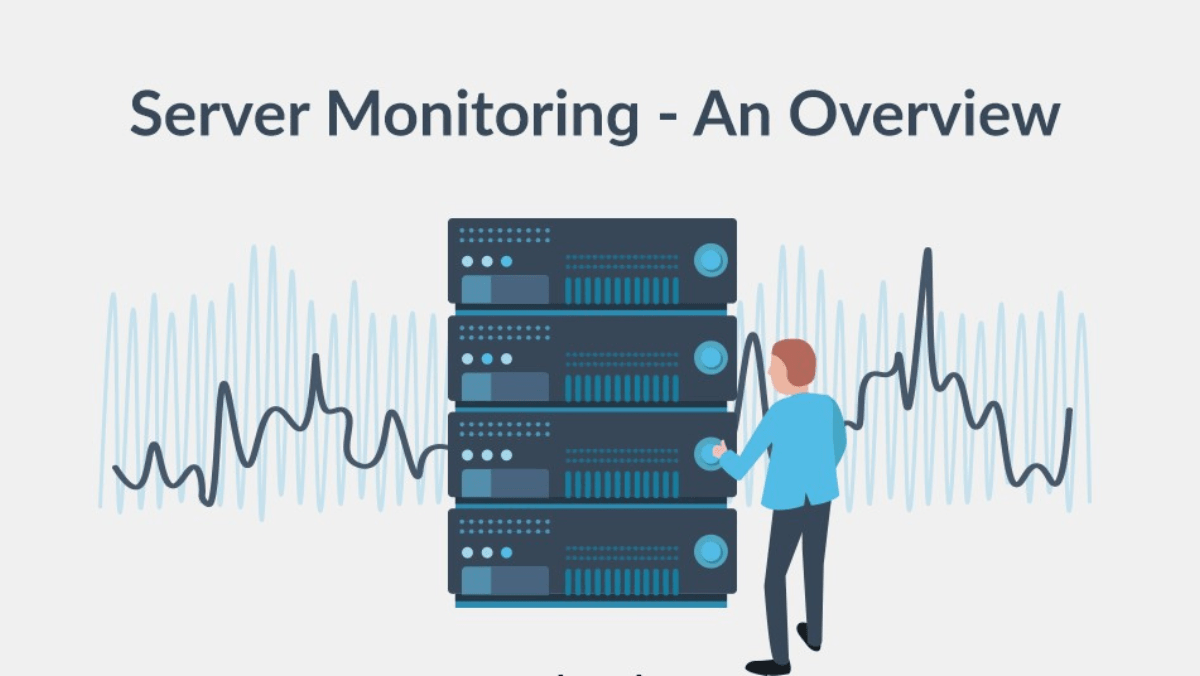
Server Monitoring: Maintaining Server Healthy

When you use a website or an app, you probably don’t think much about the servers that are running them. But behind the scenes, server monitoring ensures that servers are doing a lot of work to make sure everything runs smoothly. Just like your phone or computer needs regular updates and maintenance, servers also need to be kept in top shape. This is where server monitoring comes in!
What is Server Monitoring?

Simply put, server monitoring is the process of keeping an eye on the performance of a server. Servers can have a lot of things going on at once, and if something goes wrong, it can cause problems like slow websites or even crashes. Monitoring helps make sure everything is running as it should, and if there’s an issue, it gets spotted quickly before it becomes a bigger problem.
Why Is Server Monitoring Important?

Imagine you’re hosting a party, and everything’s going great until suddenly the lights go out, the music stops, and people start leaving. That’s basically what happens when a server has problems and no one notices in time.
Server monitoring helps avoid this by tracking things like:
This tells you how hard the server is working. If it’s using 100% of its CPU, something might be wrong.
This checks how much memory the server is working. If it’s using 100% of its CPU, something might be wrong.
Servers need a certain amount of free space to function properly. Running out of space could lead to data loss or crashes.
If the server is receiving too much traffic (sometimes caused by malicious attacks), it could slow down or crash.
This ensures the server is up and running without any interruptions.
By keeping track of these things, server monitoring makes sure your server stays healthy and everything runs smoothly.
How to keep Your Server Healthy:

Now that we know why server monitoring is important, let’s talk about how to keep a server in tip-top shape!
- Update Your Software Regularly:
Just like your phone or computer needs software updates, servers do too. Software updates can fix bugs, improve performance, and patch up security holes. Make sure to keep your server’s operating system and all installed applications up to date.
Servers can only handle so much. If you overload them, they’ll start to slow down. Keeping an eye on how much memory, CPU, and disk space is being used will help avoid performance issues. If the server is constantly running out of resources, I t might be time to upgrade.
Sometimes things go wrong, and that’s okey as long you’re prepared. Regular backups are crucial because they allow you to restore your server quickly in case of an emergency. Set up automatic backups to save time and avoid losing any important data.
To keep your server running fast and efficiently, you can optimize different things like caching and load balancing. Caching helps store data so the server doesn’t have to fetch it every time. Load balancing spreads the server’s workload across multiple machines, preventing one server from being overloaded.
Security is super important! Hackers are always trying to find ways to break into servers. Use a firewall, strong passwords, and regularly scan for viruses to keep your server safe from attacks.
Logs are like the server’s diary. They keep a record of everything that happens on the server. By checking these logs regularly, you can spot unusual activity or errors before they become serious problems.
There are lots of tools out there that can help you monitoring you’re your server automatically. Tools like Nagios, Zabbix, Datadog, and 360 Server Monitor can track server performance and send alerts if something goes wrong. This takes the guesswork out of server management and ensures that you’re always aware of any issues.
This tool offers comprehensive issues monitoring for servers, ensuring that metrics like CPU usage, memory, and network traffic are continually tracked. It also sends real-time alerts, helping prevent downtime or other critical issues. With 360 Server Monitor, you can easily monitor your server’s health and receive notifications of potential issues, so you can fix problems before they impact your users.
If too many people are trying to access your website or app at once, it could crash the server. Load balancing helps distribute the traffic across multiple servers, ensuring everything runs smoothly even when things get busy.
Keeping a server healthy is a bit like taking care of a car: regular maintenance, monitoring, and updates will help it run smoothly and last longer. Server monitoring allows you to catch problems early, optimize performance, and ensure everything is secure. Whether you’re managing your own server or working with a teach following these steps will help you keep things running without any major hiccups.
Conclusion:

Keeping a server healthy is a bit like taking care of a car: regular maintenance, monitoring, and updates will help it run smoothly and last longer. Server monitoring allows you to catch problems early, optimize performance, and ensure everything is secure. Whether you’re managing your own server or working with a team, following these steps will help you keep things running without any major hiccups.
If you’re new to server monitoring, don’t worry! Start by using simple tools like 360 Server Monitor, checking your server’s health regularly, and gradually learn more as you go. With the right monitoring, your server will stay in great shape and keep everything running without a hitch.
Read more:
https://blog.vcclhosting.com/: Server Monitoring: Maintaining Server Healthy







